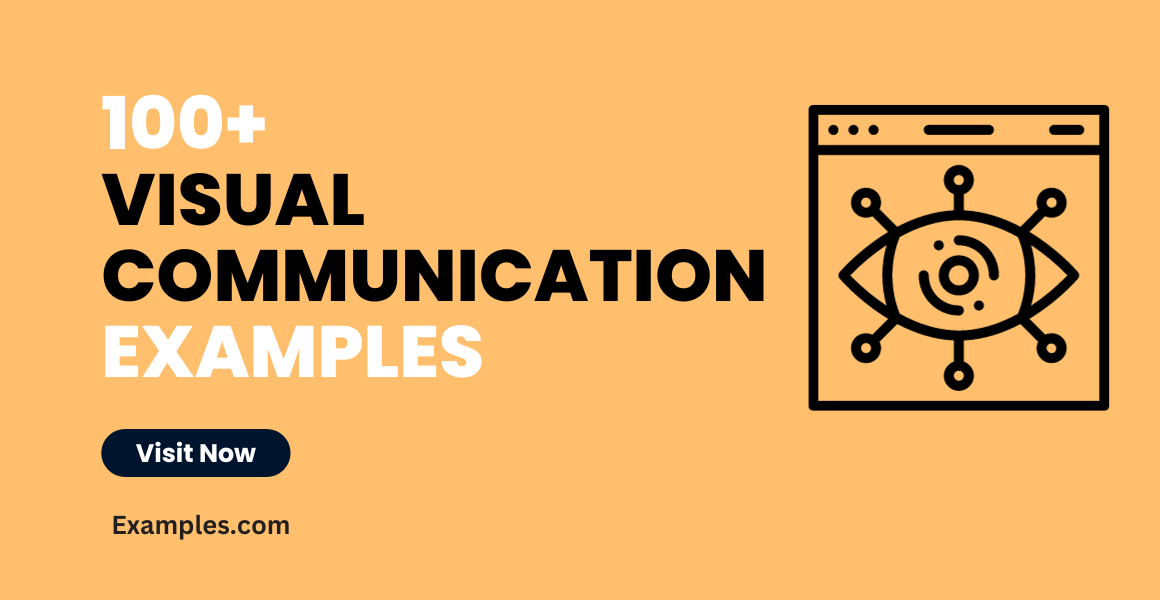99+ Visual Communication Examples
Visual communication shapes our understanding and perception in profound ways. This comprehensive guide delves into the essence of visual communication, using vivid and relatable examples. From business presentations to artistic expressions, we explore how images, symbols, and graphics convey messages more powerfully than words alone. Discover how visual communication examples enhance learning, storytelling, and even emotional connections across various fields. Embrace this journey into the visually expressive world!
What is Visual Communication?
Visual communication is the practice of conveying ideas and information through visual elements. This includes images, symbols, colors, and designs. Unlike oral or written communication, visual communication relies on the sight to interpret messages. This form of communication is integral in various fields like marketing, education, and art, providing a universal language that transcends verbal barriers. Effective visual communication can simplify complex information, evoke emotions, and enhance understanding.
What is the Best Example of Visual Communication?
One of the best examples of visual communication is a well-designed infographic. Infographics combine text, images, and design elements to present information in an easily digestible and visually appealing manner. They are particularly effective in breaking down complex data or processes into simpler, more engaging visuals. This helps in better comprehension and retention of information. Infographics are widely used in educational materials, business reports, and social media to convey messages quickly and clearly.
100 Visual Communication Examples
Dive into the diverse world of visual communication with these 100 unique and distinct examples. Each example showcases the power of visual elements in conveying messages effectively across various domains. From infographics in education to logos in branding, these examples illustrate how visuals can simplify complex information, evoke emotions, and enhance understanding. Perfect for professionals and students alike, this list serves as a practical guide to the endless possibilities of visual storytelling.
Infographic on Climate Change: Presents data on global warming trends using engaging visuals and charts.
Example: “This graph shows a steady increase in average global temperatures over the past 50 years.”

- Company Logo: Symbolizes a brand’s identity; Apple’s apple logo represents simplicity and innovation.
Example: “Our logo’s minimalist design reflects our commitment to clean, user-friendly products.” - Road Traffic Signs: Convey rules and warnings; a stop sign’s distinct octagonal shape and color.
Example: “The red octagon signals drivers to come to a full stop at the intersection.” - Movie Posters: Capture the essence of a film; the ‘Jaws’ poster effectively evokes suspense.
Example: “The shark’s looming presence in the poster instantly creates a sense of fear and anticipation.” - Memes: Combine images and text for humor or commentary; often viral on social media.
Example: “This meme humorously contrasts cats’ aloof nature with their sudden affection at meal times.” - Data Visualization in Reports: Graphs and charts make complex data comprehensible.
Example: “The bar chart clearly compares the quarterly sales figures across different regions.” - Architectural Blueprints: Detailed representation of a building plan.
Example: “The blueprint outlines the layout of each room and the overall structure of the building.” - Fashion Design Sketches: Illustrate a designer’s vision before the creation of garments.
Example: “This sketch shows the flow of the fabric and the intricate details of the dress design.” - Children’s Picture Books: Use illustrations to tell stories and convey messages.
Example: “The colorful pictures help children understand the story and engage their imagination.” - Product Packaging: Communicates brand and product information; think of the distinct Coca-Cola bottle design.
Example: “The packaging’s bright colors and bold fonts aim to attract young consumers.” - Social Media Infographics: Simplifies and visually represents data for easy sharing.
Example: “This infographic breaks down the steps of recycling in an easy-to-follow visual format.” - Public Service Announcements: Conveys important societal messages through visuals.
Example: “The poster vividly illustrates the dangers of texting while driving.” - Educational Diagrams: Used in textbooks to explain complex concepts.
Example: “The diagram of the human heart shows how blood flows through its chambers.” - User Interface Design: Visually guides users in software and applications.
Example: “The app’s interface uses icons and colors to intuitively navigate through features.” - Subway Map: Simplifies complex transit systems into an easily navigable diagram.
Example: “The map clearly shows all the subway lines and their interconnections.” - Safety Instructions on Aircraft: Use images to explain safety procedures.
Example: “The card illustrates how to fasten your seatbelt and locate the nearest exit.” - Film Storyboards: Visualize scenes and camera movements before filming.
Example: “The storyboard outlines the sequence of shots for the film’s climactic scene.” - Advertising Billboards: Grab attention and convey a message succinctly.
Example: “The billboard’s catchy phrase and bold image effectively promote the new product.” - Comic Strips: Combine illustrations with dialogues to tell a story.
Example: “Each panel in the strip adds to the humorous narrative of the characters.” - PowerPoint Presentations: Use slides to visually support spoken content.
Example: “The slide’s graph highlights the year-over-year growth of the company.” - Graphical T-Shirts: Use images and text to make a fashion statement.
Example: “The t-shirt’s graphic playfully references popular culture.” - Flowcharts in Manuals: Guide users through a process or decision.
Example: “The flowchart clearly outlines the troubleshooting steps for the device.” - Restaurant Menus: Visually present dishes to entice customers.
Example: “The menu’s photos showcase the specialty dishes and their ingredients.” - Email Newsletters with Images: Enhance the appeal and readability of information.
Example: “The newsletter uses images to break up the text and highlight key points.” - Art Exhibition Catalogues: Provide visual context and information about artworks.
Example: “The catalogue includes images of the paintings along with descriptions by the artist.” - Science Fair Posters: Display research and findings in a visually engaging manner.
Example: “The poster uses graphs and images to explain the experiment’s methodology and results.” - Wedding Invitations: Combine text and design to set the tone for the event.
Example: “The invitation’s elegant design and script font convey the formal nature of the wedding.” - Instructional YouTube Videos: Use visual aids to enhance learning.
Example: “The video uses animations to demonstrate each step of the DIY project.” - Real Estate Flyers: Showcase properties with photos and key information.
Example: “The flyer features high-quality images of the house and details about its features.” - Event Posters: Announce and promote events with eye-catching designs.
Example: “The vibrant colors and bold fonts of the poster grab attention and provide event details.” - Branded Merchandise: Items like mugs or pens with company logos promote brand identity.
Example: “The branded water bottles visually reinforce our company’s eco-friendly message.” - Architectural Models: Scale models providing a 3D representation of buildings.
Example: “The architectural model offers a detailed preview of the proposed construction.” - Vehicle Wraps for Advertising: Cars and buses wrapped in eye-catching graphics to advertise products.
Example: “The colorful wrap on the bus effectively advertises the new tech product.” - Interactive Digital Signage: Engages viewers with interactive, visually dynamic content.
Example: “The digital sign allows users to interact and learn about our services.” - Sports Team Logos and Mascots: Symbolize the spirit and identity of the team.
Example: “The team’s mascot, a fierce lion, symbolizes strength and unity.” - Cinematography in Films: The art of visual storytelling through camera work.
Example: “The film’s cinematography beautifully captures the mood of the script.” - Technical Drawings: Detailed drawings used in engineering and construction.
Example: “This technical drawing specifies the dimensions and materials required for the bridge.” - Menu Boards in Cafes: Visually display available items and prices.
Example: “The chalkboard menu artistically presents today’s specials.” - Travel Brochures: Use attractive images and layouts to promote destinations.
Example: “The brochure’s stunning images of beaches instantly attract travelers.” - Digital Dashboards: Graphically display data, like in cars or software applications.
Example: “The car’s digital dashboard clearly shows speed, fuel level, and navigation information.” - Fashion Lookbooks: Collections of photographs to showcase fashion lines.
Example: “The lookbook highlights this season’s trends with its vibrant photography.” - Instructional Diagrams in Fitness Apps: Illustrate exercise routines.
Example: “The app’s diagrams make it easy to follow along with the workout.” - Event Tickets: Design and layout convey the event’s theme.
Example: “The concert ticket’s design mirrors the artist’s album cover.” - Educational Posters in Classrooms: Visual aids that assist in teaching concepts.
Example: “The poster on the solar system helps students visualize the planets’ orbits.” - Visual Resumes: Graphic elements showcasing professional skills and experience.
Example: “The visual resume uses infographics to display my career timeline.” - Brand Identity Guidelines: Visual documentation of brand’s design standards.
Example: “The guideline ensures consistent use of our brand colors and fonts.” - Museum Exhibit Displays: Visually guide and educate visitors.
Example: “The exhibit’s displays blend historical artifacts with informative narratives.” - Wayfinding Systems in Malls: Signage guiding visitors through spaces.
Example: “The mall’s wayfinding system makes it easy to locate stores and amenities.” - Landing Pages on Websites: Combine visuals and text to engage visitors.
Example: “The landing page’s design effectively captures our brand’s essence.” - Theater Set Designs: Visually create the setting for stage performances.
Example: “The set design vividly brings the play’s 1920s setting to life.” - Wall Murals in Public Spaces: Large artworks that transform spaces and convey messages.
Example: “The mural celebrates the city’s cultural diversity.” - Visual Timelines in History Books: Outline historical events in a linear fashion.
Example: “The timeline visually traces the key events of World War II.” - Courtroom Exhibits: Visual aids to support legal arguments.
Example: “The exhibit graphically represents the sequence of events in the case.” - Retail Window Displays: Entice shoppers and reflect current trends or seasons.
Example: “The window display’s winter theme showcases the new clothing line.” - Instructional Videos for Software: Show how to use software features.
Example: “The video visually guides users through the new software update.” - Photographic Essays: A series of photos telling a story or exploring a theme.
Example: “The photo essay poignantly captures life in urban landscapes.” - Visual Mind Maps: Organize thoughts or concepts visually.
Example: “The mind map visually organizes the project’s main ideas and tasks.” - Board Game Designs: Visual elements that enhance gameplay experience.
Example: “The board game’s design vividly brings the fantasy world to life.” - Greeting Cards: Combine artwork and text to convey sentiments.
Example: “The card’s design and heartfelt message make it special.” - Pictograms in Olympics: Symbolize sports and events in an easily identifiable manner.
Example: “The pictograms help visitors identify the various Olympic sports venues.” - Emergency Evacuation Maps: Provide clear routes for safe building exits.
Example: “The evacuation map in the hotel room clearly indicates the nearest exits.” - Graphic Novels: Combine art and text to tell complex stories.
Example: “The graphic novel uses vivid illustrations to bring its characters to life.” - Digital Art Galleries: Showcase art through online platforms.
Example: “The digital gallery allows viewers to explore contemporary artworks from their homes.” - Webcomics: Online comics that use visuals for storytelling.
Example: “The webcomic’s unique drawing style adds to its humorous content.” - E-learning Modules: Use graphics and animations for online education.
Example: “The e-learning module includes interactive diagrams to explain scientific concepts.” - Photography Exhibitions: Display thematic photo collections.
Example: “The exhibition’s wildlife photographs highlight the beauty of natural habitats.” - Branding Guidelines Documents: Visual standards for brand consistency.
Example: “The branding document outlines the correct usage of our company’s logo.” - Virtual Reality Experiences: Immersive visuals for education or entertainment.
Example: “The VR experience transports users to a realistic simulation of ancient Rome.” - Graphic Organizers in Learning: Help students visually organize information.
Example: “The Venn diagram helps students compare and contrast two concepts.” - Animated Explainer Videos: Simplify complex topics through animation.
Example: “The animated video makes learning about renewable energy fun and engaging.” - Zoo Exhibit Signage: Provide information about animals and habitats.
Example: “The signage explains the diet and behavior of the species on display.” - City Zoning Maps: Visual representation of urban planning divisions.
Example: “The zoning map clearly demarcates residential and commercial areas.” - Tourist Maps and Guides: Help visitors navigate and explore attractions.
Example: “The tourist map highlights all the must-see landmarks in the city.” - Digital Billboards: Dynamic advertising on large screens.
Example: “The digital billboard in Times Square displays vivid, rotating advertisements.” - Theme Park Maps: Guide visitors through attractions and facilities.
Example: “The theme park map shows the locations of all rides and eateries.” - Product Assembly Instructions: Visual steps for putting products together.
Example: “The instructions visually demonstrate how to assemble the furniture.” - GIFs in Digital Communication: Add humor or emphasis in online conversations.
Example: “The GIF added a playful tone to the message.” - Art Installation in Public Spaces: Convey messages or aesthetics through large-scale art.
Example: “The installation’s use of light and shadow creates an immersive experience.” - Educational Science Models: 3D models for teaching concepts like the solar system.
Example: “The model visually demonstrates the rotation and orbit of planets.” - Magazine Layout and Design: Combines text and images for engaging reading.
Example: “The magazine’s layout beautifully integrates photos with the articles.” - Augmented Reality in Retail: Lets customers visualize products in real environments.
Example: “The AR app shows how the furniture would look in your living room.” - YouTube Thumbnails: Attract viewers to video content.
Example: “The thumbnail’s bold text and image tease the video’s content.” - Botanical Garden Labels: Inform about plant species and origins.
Example: “Each label provides interesting facts about the plant’s native habitat.” - Animated GIFs in Email Marketing: Engage recipients and highlight offers.
Example: “The animated GIF in the email draws attention to the special discount.” - Cultural Infographics: Visualize aspects of different cultures.
Example: “The infographic beautifully represents various traditional dances from around the world.” - Visual FAQs on Websites: Simplify and visually present common queries.
Example: “The illustrated FAQs make it easy for customers to find answers.” - Film and TV Opening Credits: Set the tone and style of the show or movie.
Example: “The opening credits artistically introduce the main characters and theme.” - Character Design in Animation: Creates visually distinct and memorable characters.
Example: “The character’s design reflects their quirky and adventurous personality.” - Trade Show Booth Designs: Attract attendees and represent brands visually.
Example: “The booth’s bold design and interactive elements draw in a large crowd.” - Resume Infographics: Visually display professional skills and experience.
Example: “The infographic resume creatively showcases my career milestones and skills.” - Social Media Profile Layouts: Design elements that convey personal or brand identity online.
Example: “The layout of her Instagram profile effectively showcases her photography skills.” - Visual Step-by-Step Cooking Recipes: Use images to simplify the cooking process.
Example: “The step-by-step visuals make following this complex recipe much easier.” - Real Estate Virtual Tours: Offer an immersive visual experience of properties.
Example: “The virtual tour provides a realistic view of the home’s interior and layout.” - Airport Runway Markings: Essential visuals for pilot navigation and safety.
Example: “The markings on the runway guide pilots during takeoff and landing.” - Symbolic Art in Public Campaigns: Use symbols to raise awareness about social issues.
Example: “The artwork’s use of symbols powerfully communicates the message of conservation.” - Cinema and Theater Marquees: Visually advertise current and upcoming shows.
Example: “The marquee’s bright lights and bold letters draw attention to the new play.” - Interactive E-books: Combine text with interactive elements for an engaging reading experience.
Example: “The interactive ebook brings the story to life with animations and sound effects.” - Music Festival Lineup Posters: Visual representation of artists and schedules.
Example: “The poster artistically arranges the lineup, highlighting the headlining acts.” - Health and Safety Procedure Posters: Visual aids to ensure workplace safety.
Example: “The poster clearly illustrates the steps for proper handwashing techniques.” - Language Learning Apps with Visual Aids: Use images and graphics to facilitate language acquisition.
Example: “The app uses pictures and visual exercises to teach new vocabulary words.” - Interactive Museum Exhibits: Utilize visuals and technology to engage and educate visitors.
Example: “The interactive exhibit allows visitors to virtually explore ancient civilizations through touch screens and 3D models.”
Visual Communication Sentence Examples
Visual communication sentences are key in delivering clear and impactful messages. These examples showcase how visual elements can enhance communication, making it more engaging and understandable. From marketing to everyday conversations, visual sentences add depth to the message, improving comprehension and retention. Explore how visuals bring life to words and transform the way we convey ideas.
- “Use pie charts for better data representation.”: Incorporate visuals to make statistics more accessible and understandable.
Example: “Pie charts visually break down our market share among competitors.” - “Let’s add an infographic to our presentation.”: Suggests using visual aids for effective communication.
Example: “An infographic can succinctly explain the project’s milestones and achievements.” - “The poster needs more vibrant colors to stand out.”: Emphasizes the importance of visual appeal in design.
Example: “Brighter colors on the poster will capture more attention during the event.” - “Incorporate icons to enhance the user interface.”: Suggests using visual elements for a better user experience.
Example: “Icons can make navigation through the app more intuitive and user-friendly.” - “Your report would benefit from a flowchart.”: Advises using visuals to explain processes.
Example: “A flowchart can help clarify the steps involved in our new workflow.” - “Let’s use a bar graph to compare annual sales.”: Proposes visuals for effective data comparison.
Example: “Bar graphs will allow us to easily compare this year’s sales with last year’s.” - “Add images to your blog post for more engagement.”: Recommends visuals to increase reader interest.
Example: “Including relevant images can make the blog post more visually appealing and informative.” - “A storyboard will help visualize our concept.”: Suggests creating visual sequences for planning.
Example: “Storyboarding can give us a clearer idea of how the ad campaign will unfold.” - “Incorporate a color-coded system in the report.”: Advises using colors for organization and emphasis.
Example: “Color-coding different sections will make the report more navigable and user-friendly.” - “Use an animated video to explain the concept.”: Recommends animation for engaging explanations.
Example: “An animated video could make our explanation of renewable energy more captivating and clear.”
Visual Communication Examples in Data Science
In data science, visual communication plays a pivotal role in interpreting complex data sets and conveying insights. These examples highlight how visual tools like charts, graphs, and infographics are essential in simplifying and effectively communicating data science concepts. From academic research to business analytics, see how visual communication bridges the gap between data and understanding.
- Heat Maps in User Behavior Analysis: Shows areas of a website most frequently interacted with by users.
Example: “The heat map reveals that most users focus on the top right corner of our homepage.” - Interactive Dashboards for Real-Time Data: Allows users to explore and interact with live data sets.
Example: “Our interactive dashboard lets stakeholders monitor sales data in real-time.” - Data Visualizations in Academic Research: Graphically represent research findings for clarity.
Example: “The visualization simplifies our complex research findings on climate patterns.” - Predictive Analytics Models Visualization: Makes predictive data models comprehensible.
Example: “Visualizing the model helps in understanding potential future market trends.” - Infographics in Data Storytelling: Narrate stories behind data using engaging visuals.
Example: “The infographic effectively tells the story of population growth over the decades.” - Scatter Plots in Statistical Analysis: Illustrate relationships between variables.
Example: “The scatter plot clearly shows the correlation between age and technology usage.” - Tree Maps for Hierarchical Data: Visualize nested data in an easy-to-understand format.
Example: “The tree map organizes our product categories and subcategories visually.” - Choropleth Maps in Geographic Data Analysis: Show data distribution over geographic areas.
Example: “The choropleth map highlights regions with the highest product sales.” - Timeline Charts for Historical Data: Depict chronological sequences in data.
Example: “This timeline chart traces the history of internet evolution.” - Box Plots for Statistical Range Display: Represent the distribution of a data set.
Example: “The box plot provides a clear summary of our survey responses’ distribution.”
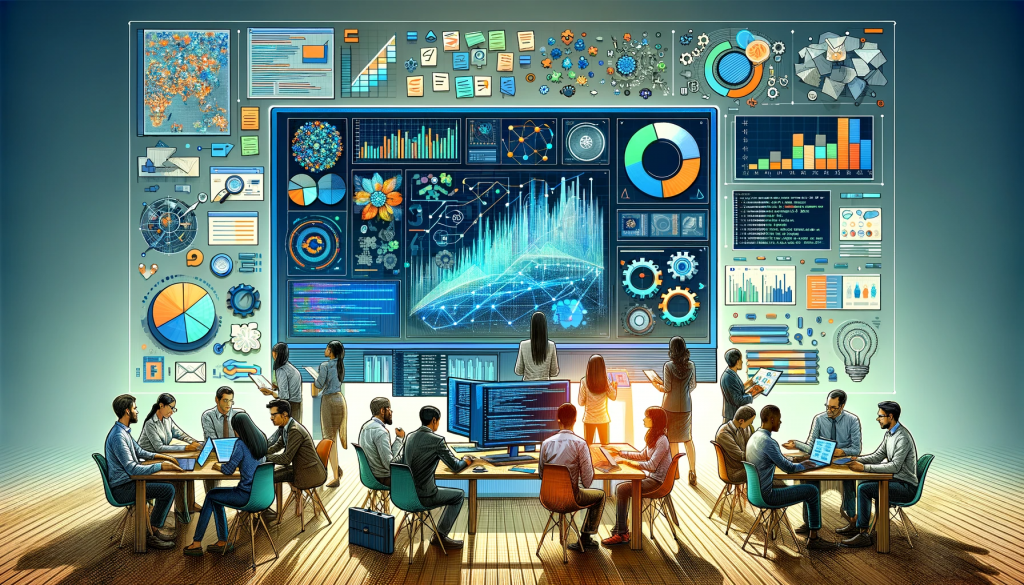
Visual Communication Examples in Health
Visual communication in health is critical for educating, informing, and making healthcare more accessible. These examples demonstrate how visual aids can simplify medical information, assist in patient care, and enhance health awareness. Discover the role of visuals in making health communication more effective and comprehensible for patients and professionals alike.
- Anatomical Diagrams in Patient Education: Helps patients understand medical conditions.
Example: “The diagram visually explains the patient’s cardiovascular condition.” - Infographics for Public Health Campaigns: Simplify and disseminate health information.
Example: “Our vaccination infographic effectively communicates the benefits and process.” - Instructional Videos for Physical Therapy: Guide patients through rehabilitation exercises.
Example: “The video demonstrates each exercise step-by-step for home rehabilitation.” - Signage for Hospital Wayfinding: Assists patients and visitors in navigating healthcare facilities.
Example: “Clear signage ensures that patients easily find their way to different departments.” - Medical Illustrations in Textbooks: Aid in the education of medical students.
Example: “Detailed illustrations in the textbook make complex surgical procedures easier to grasp.” - Health Apps Interface Design: Enhances user experience for tracking and managing health.
Example: “The app’s intuitive design makes it easy for users to log their daily health metrics.” - Dental Procedure Visual Aids: Explain treatments to patients through visuals.
Example: “Visual aids help patients understand their upcoming dental procedures.” - Emergency Procedure Posters: Provide critical information in a visual format for quick reference.
Example: “The poster outlines the steps to perform CPR in an emergency.” - Nutrition Charts and Food Pyramids: Educate about balanced diets and nutrition.
Example: “The food pyramid visually breaks down the recommended daily intake of different food groups.” - Visuals in Telemedicine Platforms: Facilitate remote consultations with clear imagery.
Example: “Telemedicine platforms use high-quality visuals for accurate remote diagnosis.”
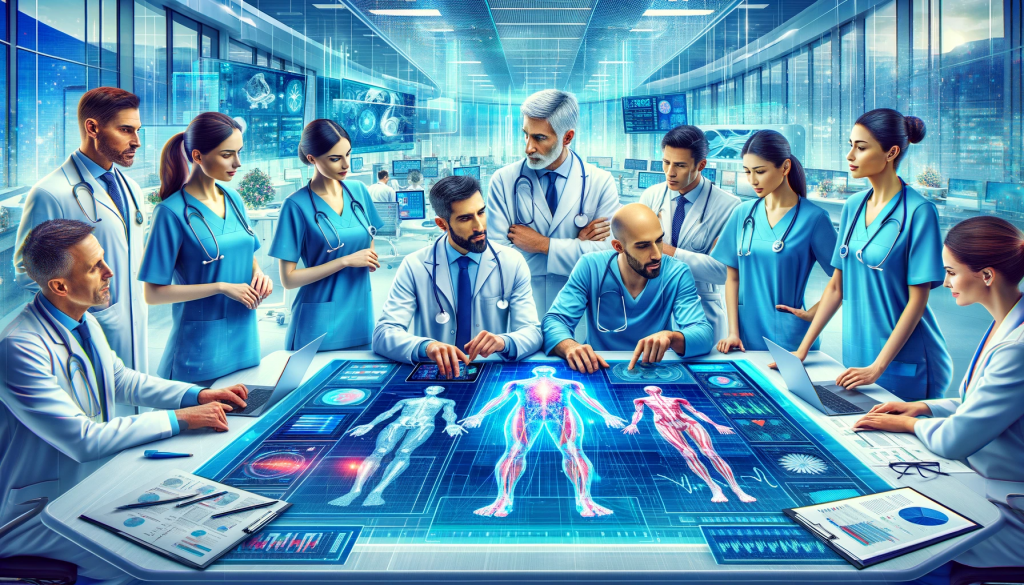
Visual Communication Examples in Architecture
Architecture relies heavily on visual communication to convey design concepts and details. These examples illustrate how architects use visuals to represent ideas, collaborate with clients, and guide construction. Discover the integral role of drawings, models, and digital visualizations in the world of architecture.
- 3D Architectural Renderings: Provide a realistic preview of proposed buildings.
Example: “The 3D rendering visually communicates the design’s aesthetics and functionality.” - Site Plans in Project Proposals: Show the layout and design of a building site.
Example: “The site plan illustrates the building’s position on the property.” - Landscape Architecture Visualizations: Depict outdoor spaces and landscaping designs.
Example: “The visualization showcases the planned arrangement of gardens and pathways.” - Virtual Reality Walkthroughs of Designs: Offer an immersive experience of architectural designs.
Example: “VR walkthroughs allow clients to experience the space before it’s built.” - Elevation Drawings in Client Presentations: Show the exterior view of buildings.
Example: “Elevation drawings help clients visualize the building’s facade.” - Architectural Model Building: A physical representation of architectural concepts.
Example: “The scale model provides a tangible sense of the building’s proportions.” - Interactive Building Information Modeling (BIM): Integrates various aspects of building design.
Example: “BIM facilitates better collaboration among architects, engineers, and contractors.” - Urban Planning Maps: Visual tools for city development and zoning.
Example: “The map outlines the proposed changes in urban infrastructure.” - Interior Design Mood Boards: Convey aesthetic themes and material choices.
Example: “The mood board presents the color scheme and textures for the interior design.” - Cross-sectional Drawings in Construction Documents: Detail the interior structure of a building.
Example: “Cross-sectional drawings illustrate the building’s internal framework and materials used.”
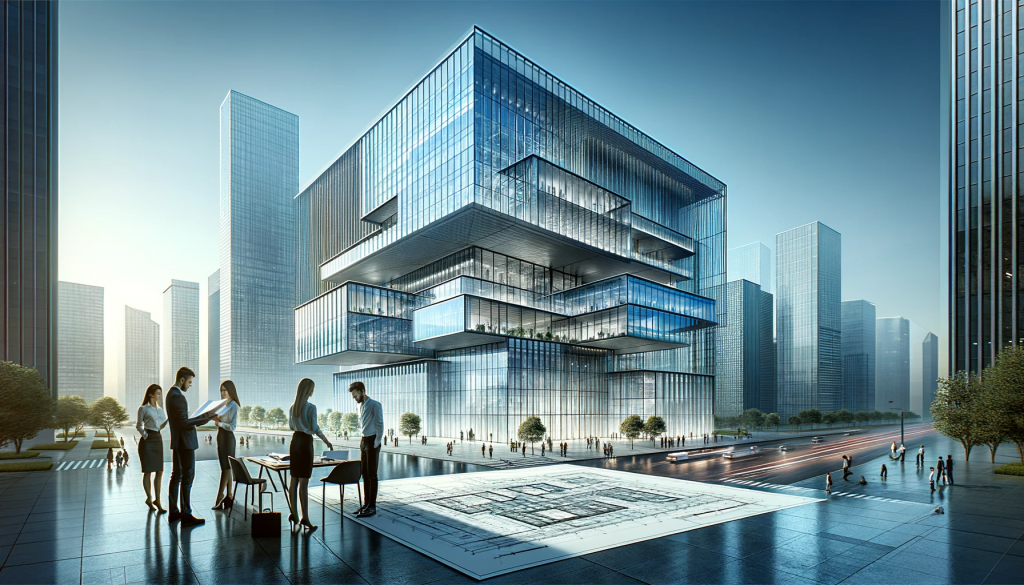
Visual Communication Examples in Art
Art is a realm where visual communication speaks volumes, transcending language barriers and cultural differences. This section explores 10 unique examples of visual communication in art, each illustrating how artists convey deep messages, emotions, and narratives through their creative work. From paintings to digital installations, these examples highlight the diverse ways in which visual elements can be used to engage, provoke thought, and evoke emotions in viewers.
- Abstract Expressionist Paintings: Use color and form to express complex emotions.
Example: “Jackson Pollock’s paintings communicate a sense of chaos and passion through their vibrant, swirling patterns.” - Public Murals for Social Causes: Address social issues through large-scale public artworks.
Example: “The mural depicting equality and justice has become a landmark for community advocacy.” - Sculptures in Urban Spaces: Transform public spaces and provoke thought.
Example: “The sculpture in the park, symbolizing peace, has become a popular spot for reflection.” - Interactive Art Installations: Engage audiences in a participatory experience.
Example: “Yayoi Kusama’s Infinity Mirrors create an immersive, reflective experience, allowing viewers to become part of the art.” - Digital Art Projections: Use technology to display art on buildings and landmarks.
Example: “The digital projection on the city hall building beautifully blends historical architecture with contemporary art.” - Performance Art: Convey messages through live, often provocative performances.
Example: “Marina Abramović’s performance art challenges viewers’ perceptions of time and endurance.” - Art in Political Cartoons: Use humor and satire to comment on political issues.
Example: “The cartoon cleverly uses caricature to critique current political events.” - Environmental Art: Create art using natural landscapes to raise awareness about environmental issues.
Example: “Andy Goldsworthy’s environmental sculptures highlight the beauty and fragility of nature.” - Graffiti and Street Art: Offer a voice to urban communities and often deliver powerful social messages.
Example: “Banksy’s graffiti art often contains sharp political and social commentary.” - Photographic Essays: Tell stories or document events through a series of photographs.
Example: “The photo essay on urban life captures the vibrancy and challenges of city living.”
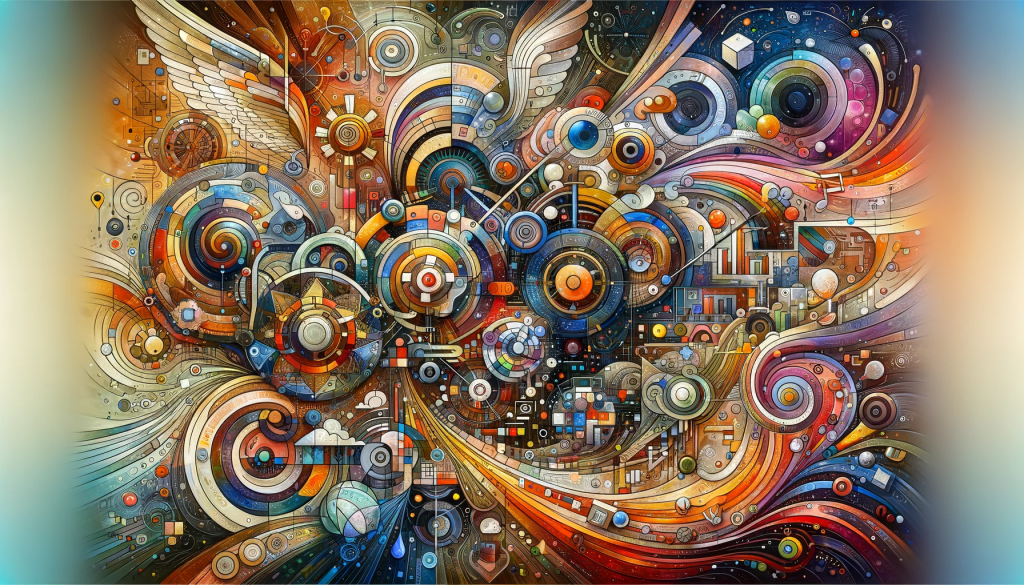
Visual Communication Examples in Business
In the business world, visual communication is key to branding, marketing, and effective internal communication. These 10 examples showcase how businesses use visuals to convey their brand message, engage customers, and facilitate smooth operations. From logos to corporate presentations, each example demonstrates the power of visuals in creating a lasting impression and efficiently communicating complex business concepts.
- Branded Office Environments: Create a visual brand experience in office spaces.
Example: “Google’s offices use branding and color schemes to create a vibrant and creative work environment.” - Corporate Presentation Slides: Use visuals to enhance communication of business strategies and results.
Example: “The presentation uses graphs and infographics to succinctly present the quarterly financial results.” - Business Process Infographics: Simplify complex business processes for training or marketing purposes.
Example: “The infographic clearly outlines our customer service process, enhancing understanding for new employees.” - Branded Merchandise for Corporate Events: Strengthen brand identity through customized items.
Example: “The company’s logo on t-shirts and bags at the trade show created a unified brand presence.” - Interactive Digital Kiosks in Retail: Enhance customer experience and engagement in stores.
Example: “The digital kiosk allows customers to browse the product catalog and check item availability interactively.” - Visuals in Annual Reports: Communicate financial and operational data effectively.
Example: “The annual report uses charts and images to highlight key achievements and financial growth.” - Visual Brand Identity: Logos, color schemes, and typography that define a company’s image.
Example: “Apple’s minimalist logo and design aesthetic communicate sophistication and innovation.” - Corporate Videos for Brand Storytelling: Engage audiences with the company’s history and values.
Example: “The brand storytelling video emotionally connects viewers to the company’s journey and ethos.” - Business Card Design: Convey professional identity and contact information.
Example: “The business card’s clean design and distinctive logo make a memorable first impression.” - Visuals in Email Marketing Campaigns: Enhance message clarity and engagement rates.
Example: “The marketing email uses vibrant images and clear call-to-action buttons to boost customer engagement.”

Visual Communication Examples in Advertising
Advertising is a domain where visual communication is critical in capturing attention and conveying messages quickly. These 10 examples illustrate how advertisers use visuals to create impactful and memorable campaigns. From billboards to social media ads, each example demonstrates how visual elements can effectively attract and persuade audiences, making advertising messages stick in the minds of consumers.
- Billboard Advertisements: Large-scale visuals to capture public attention.
Example: “The billboard ad for the new movie, with its dramatic visuals, intrigues passersby.” - Television Commercials: Combine visual storytelling with sound to convey a brand’s message.
Example: “The TV commercial’s vivid imagery and catchy jingle make the product memorable.” - Print Ads in Magazines: Use striking images and minimal text for high impact.
Example: “The magazine ad’s compelling visual and succinct message instantly draw the reader’s attention.” - Online Banner Ads: Digital ads that use visuals to drive web traffic.
Example: “The animated banner ad on the website highlights the limited-time offer effectively.” - Social Media Ad Campaigns: Leverage visuals to engage users on platforms like Instagram and Facebook.
Example: “The social media ad uses eye-catching graphics and hashtags to reach a wider audience.” - Interactive Ad Installations: Engage the audience physically and visually in public spaces.
Example: “The interactive installation in the mall invites passersby to engage with the brand in a fun way.” - Product Packaging as Advertising: Visually appealing packaging that promotes brand identity.
Example: “The product’s unique packaging stands out on shelves and attracts customers.” - Sponsored Influencer Posts: Visual content created by influencers to promote products.
Example: “The influencer’s post, with its authentic lifestyle photo, effectively promotes the brand.” - Email Marketing with Visual Content: Use visuals to enhance the appeal of promotional emails.
Example: “The email’s compelling visuals and clear layout lead to higher engagement rates.” - Point-of-Sale Displays: Visually enticing displays at retail checkout areas.
Example: “The point-of-sale display’s bright colors and attractive design draw customers’ attention to the new product.”

Visual Communication Examples at Workplace
Effective visual communication in the workplace is essential for clarity, efficiency, and engagement among employees. These 10 examples highlight how various forms of visual communication are employed in professional settings to facilitate better understanding and collaboration. From organizational charts to safety signage, each example underscores the importance of clear and concise visual messages in maintaining a productive and informed work environment.
- Organizational Charts: Visually depict company structure and employee roles.
Example: “The organizational chart clearly shows the hierarchy and departments within the company.” - Workplace Safety Signs: Communicate important safety information visually.
Example: “The safety signs around the construction site effectively warn workers of potential hazards.” - Instructional Videos for Training: Use visuals to enhance learning and retention in training sessions.
Example: “The training video uses animations to demonstrate the new software’s features effectively.” - Internal Communication Posters: Convey company news or motivational messages.
Example: “The poster in the break room visually communicates the company’s core values.” - Visual Project Timelines: Track progress and deadlines in project management.
Example: “The project timeline visually represents the stages and deadlines of the upcoming project.” - Employee Performance Dashboards: Graphically display key performance indicators.
Example: “The dashboard provides a visual overview of individual and team performance metrics.” - Visuals in Meeting Presentations: Enhance the clarity and impact of meeting content.
Example: “The presentation uses charts and visuals to summarize the marketing strategy effectively.” - Digital Notice Boards: Display important announcements and updates.
Example: “The digital notice board in the lobby cycles through upcoming company events and announcements.” - Workflow Diagrams: Map out processes and workflows visually.
Example: “The workflow diagram simplifies understanding of the new project’s process flow.” - Employee Onboarding Materials: Use visuals to welcome and guide new hires.
Example: “The onboarding booklet uses engaging visuals to introduce new employees to the company culture and policies.”
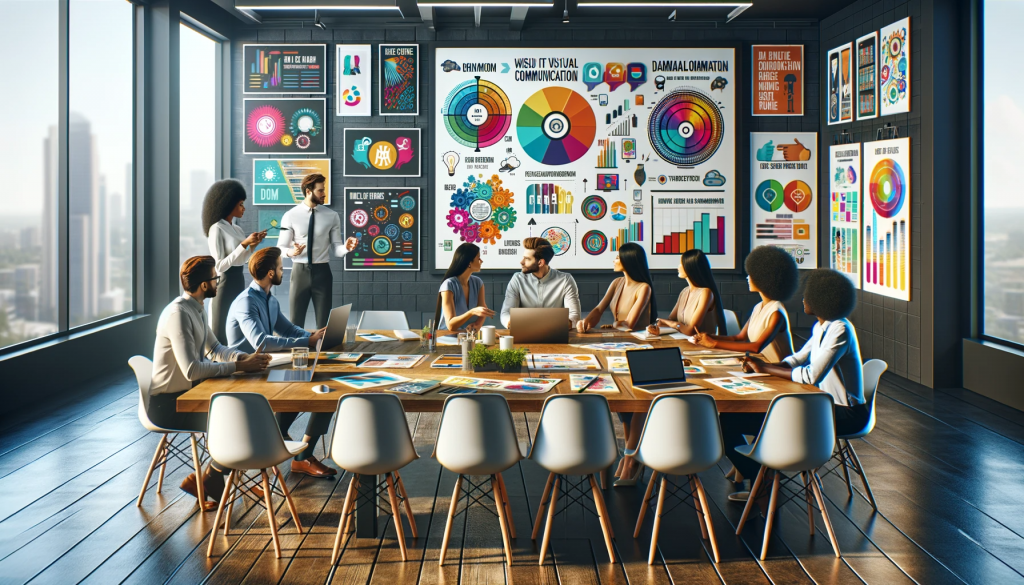
Visual Communication Examples for Students
Visual communication is a key skill for students, enhancing learning and expression. This section offers 10 unique examples, demonstrating how visual elements like diagrams, presentations, and project displays can enrich the educational experience. These examples highlight the importance of visuals in simplifying complex information, boosting creativity, and facilitating effective communication in academic settings.
- Mind Maps for Study Notes: Organize key concepts visually for better retention.
Example: “I created a mind map to visually represent the main themes of the novel we’re studying.” - Educational Posters for Science Fairs: Convey project ideas and results through engaging visuals.
Example: “Her poster used charts and images to explain her volcano experiment.” - Presentation Slides for Group Projects: Use visuals to support and enhance verbal presentations.
Example: “Our PowerPoint slides included graphs to illustrate the market trends.” - Flashcards for Language Learning: Visual aids to memorize vocabulary and phrases.
Example: “I use picture flashcards to remember new French words and their meanings.” - Infographics for History Assignments: Simplify timelines and historical events.
Example: “The infographic clearly depicted the events leading up to World War I.” - Visual Art Projects in Fine Arts Classes: Express creativity and concepts through art.
Example: “His painting visually interpreted the theme of ‘unity in diversity’.” - Graphical Organizers for Essay Planning: Visually structure ideas before writing.
Example: “I used a Venn diagram to plan my compare and contrast essay.” - Digital Portfolios for Art Students: Showcase artwork and design projects online.
Example: “Her digital portfolio beautifully displays her graphic design projects.” - Annotated Diagrams in Biology: Illustrate and explain biological processes.
Example: “The diagram of the cell was annotated to highlight each organelle’s function.” - Video Projects for Media Studies: Combine visuals and audio for storytelling.
Example: “We made a documentary video exploring local environmental issues.
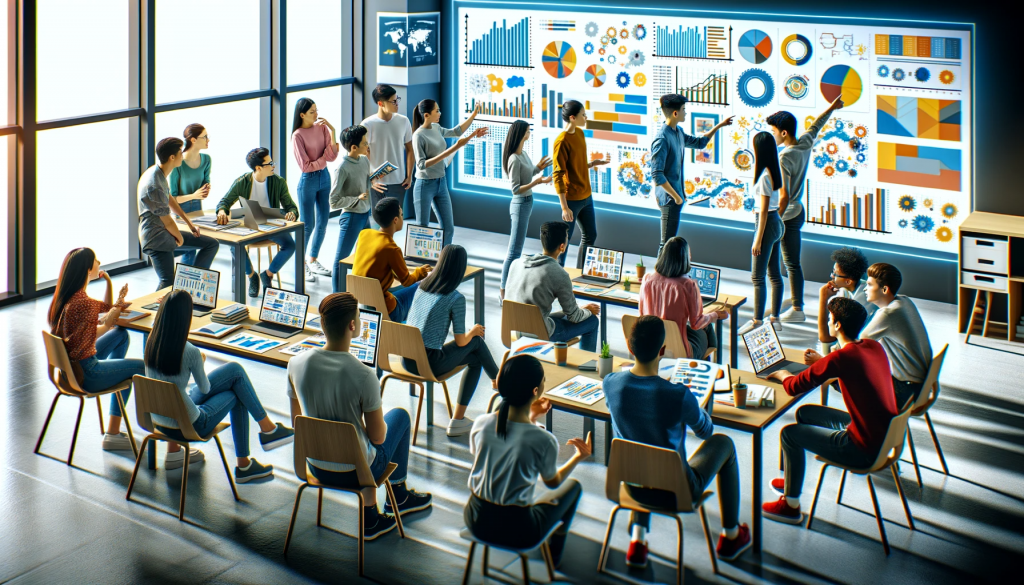
Visual Communication Examples for Resume
In today’s competitive job market, a visually compelling resume can make a significant impact. This section provides 10 innovative examples of how visual communication can be used in resumes. From infographics to clean layout designs, these examples demonstrate how visuals can effectively showcase skills, experience, and professionalism, making a resume stand out to potential employers.
- Infographic Resume Layouts: Present skills and experience through creative visuals.
Example: “My resume uses an infographic format to display my career timeline and skill set.” - Iconography to Highlight Skills: Use icons to visually represent professional abilities.
Example: “Icons next to each skill on my resume quickly draw attention to my expertise.” - Timeline Designs for Career History: Show work experience progression visually.
Example: “The timeline on my resume visually traces my professional growth over the years.” - Graphs to Represent Skill Proficiency: Quantify abilities in a visual format.
Example: “Bar graphs on my resume depict my proficiency in different programming languages.” - Color Coding for Different Sections: Use colors to organize and differentiate resume sections.
Example: “Each section of my resume is color-coded for easy navigation and readability.” - Visual Quotes from References: Incorporate testimonials with stylized text.
Example: “A visual quote from my previous manager highlights my teamwork skills.” - Personal Branding with a Logo: Create a personal logo for brand identity.
Example: “My personal logo on the top of my resume reinforces my brand as a graphic designer.” - Portfolio Links with QR Codes: Provide easy access to online work portfolios.
Example: “A QR code on my resume directs employers to my online photography portfolio.” - Clean, Modern Design for Clarity: Aesthetically pleasing layout that enhances content.
Example: “The modern design of my resume makes my qualifications stand out clearly.” - Custom Illustrations for Creative Roles: Showcase artistic skills directly on the resume.
Example: “Custom illustrations on my resume reflect my creativity as an illustrator.”

Visual Communication Examples for Interview
Effective visual communication can be a game-changer in job interviews, demonstrating a candidate’s professionalism and preparedness. The following 10 examples illustrate how visual aids can enhance communication during an interview, from presentations to visual portfolios, showcasing expertise, and making a memorable impression on potential employers.
- Portfolio Presentation: Showcase your work through a digital or physical portfolio.
Example: “During the interview, I presented my design portfolio on a tablet for a visual impact.” - Graphs Showing Past Successes: Use graphs to visually demonstrate previous achievements.
Example: “I used a line graph to show the sales growth achieved in my last role.” - Slide Deck for Project Explanation: Explain complex projects or ideas through a concise slide deck.
Example: “My slide deck succinctly presented the marketing campaign I led.” - Visual Handouts of Case Studies: Provide printed visual case studies to illustrate your problem-solving skills.
Example: “I handed out a case study that visually detailed how I increased client engagement.” - Interactive Digital Reports: Use a tablet or laptop to present interactive reports.
Example: “I navigated through an interactive report to demonstrate my data analysis skills.” - Charts to Explain Work Processes: Visually outline how you approach tasks or projects.
Example: “I used a flowchart to describe my methodical approach to project management.” - Mock-ups for Proposed Solutions: Show visual mock-ups of ideas or solutions for the company.
Example: “I presented a mock-up design of a potential app interface for the company.” - Visual Aids for Storytelling: Enhance your responses with relevant visual aids.
Example: “To illustrate my point, I showed a photograph from a successful event I organized.” - Infographics on Industry Trends: Display your knowledge of industry trends through infographics.
Example: “I shared an infographic I created on recent trends in digital marketing.” - Tablet Presentations for Dynamic Interaction: Use a tablet for a more dynamic presentation.
Example: “I used my tablet to present a series of short videos I produced, demonstrating my editing skills.”

Visual Communication Examples in Daily Life
Visual communication is an integral part of our daily lives, often unnoticed, yet it plays a crucial role in how we interpret and interact with the world. Here are 10 unique examples demonstrating the ubiquity and importance of visual communication in everyday scenarios. These examples show how visual elements like signage, product labels, and even mobile apps use visuals to convey information, guide actions, and enhance our daily experiences.
- Weather Icons on Mobile Apps: Quickly convey weather conditions.
Example: “The sunny icon on the app indicated a clear day ahead.” - Nutritional Information Labels: Provide health information at a glance.
Example: “The label’s visuals helped me understand the product’s calorie and nutrient content.” - Emoji Usage in Text Messaging: Express emotions and nuances in digital communication.
Example: “I used a smiley face emoji to show I was joking in the text.” - Signage in Public Transportation: Guide passengers with visual cues.
Example: “The train station’s signs made navigating to my platform easy.” - Instructional Icons on Appliances: Simplify the use of household devices.
Example: “The icons on the washing machine indicate different washing modes.” - Online Shopping Websites Layout: Enhance user experience with visual design.
Example: “The website’s layout visually guided me to the sale section.” - Fitness Tracker Graphs and Charts: Visualize progress in health and fitness goals.
Example: “The app’s chart shows how my daily step count has improved.” - ATM Interface Screens: Simplify banking transactions with clear visuals.
Example: “The ATM’s screen graphics made withdrawing money straightforward.” - Home Decor and Organizational Hacks: Visually improve living spaces.
Example: “The Pinterest board gave me visual ideas for organizing my home office.” - Visual Calendars and Planners: Plan and organize tasks effectively.
Example: “My wall calendar visually reminds me of upcoming appointments and events.”
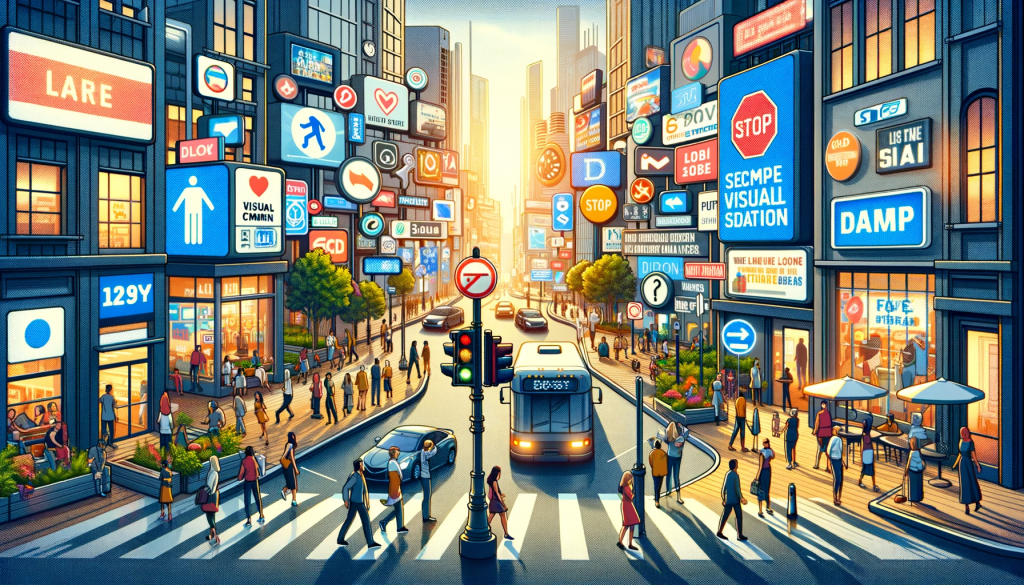
Visual Communication Examples in Graphic Design
Graphic design is a pivotal tool in visual communication, blending creativity and strategy to convey messages effectively. This section explores ten unique examples, each illustrating the profound impact of graphic design in advertising, branding, and digital media. Discover how skilled designers use color, typography, and composition to create compelling visuals that resonate with audiences and define brand identities.
- Brand Identity Kits: Establishes a company’s visual presence.
Example: “Our brand identity kit includes specific color palettes and fonts to ensure brand consistency.” - Website Layouts: Combines aesthetics and usability for an effective online presence.
Example: “The website’s layout balances visual appeal with user-friendly navigation.” - Magazine Cover Design: Captures attention and reflects the content’s theme.
Example: “This month’s cover design cleverly hints at the main feature article’s topic.” - Mobile App Interfaces: Enhances user experience through visual elements.
Example: “The app’s interface uses vibrant colors and intuitive icons for easy navigation.” - Typography in Advertising: Uses font styles to convey brand messages.
Example: “The ad’s bold typography effectively communicates the product’s robust features.” - Packaging Design for Products: Visual appeal to stand out on shelves.
Example: “The packaging’s unique design makes our product easily recognizable.” - Corporate Brochures: Visually presents company information and services.
Example: “Our brochure’s design neatly organizes information with engaging visuals.” - Environmental Graphics: Enhances spaces like offices or public areas.
Example: “The wall graphics in our office visually represent our company values.” - Motion Graphics in Digital Ads: Combines animation with graphic design for dynamic advertising.
Example: “The digital ad’s motion graphics make the promotion more engaging.” - Business Cards: Represents personal and professional identity.
Example: “My business card’s design is both professional and visually appealing.”
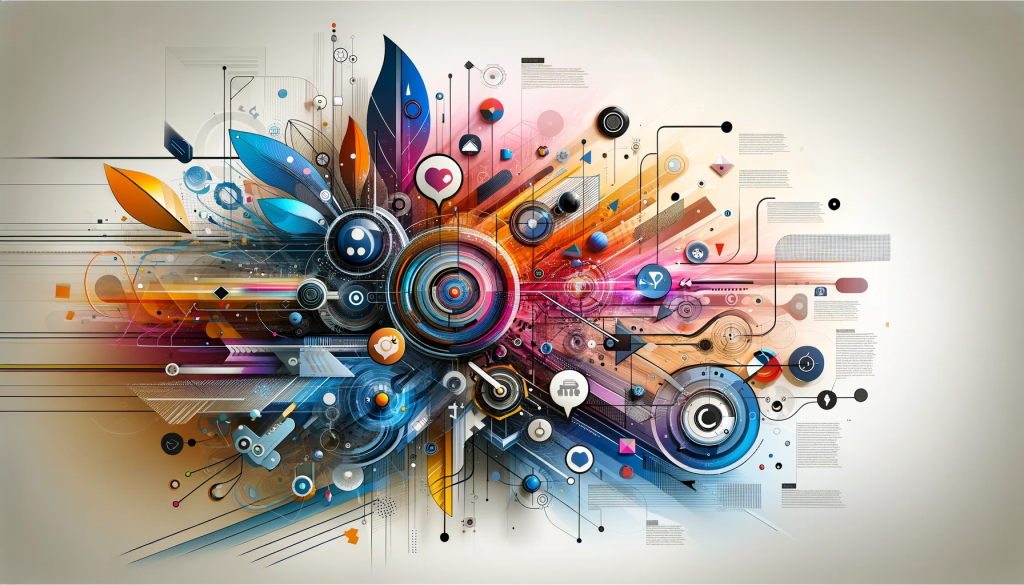
Visual Communication Examples in Film
Film is an art form where visual communication plays a crucial role in storytelling. This section highlights ten distinct examples, showcasing how cinematography, set design, and visual effects come together to create memorable cinematic experiences. These examples demonstrate the power of visual storytelling in evoking emotions and bringing narratives to life.
- Cinematic Color Grading: Sets the mood and tone of scenes.
Example: “The film’s color grading gives a warm, nostalgic feel to the flashback scenes.” - Visual Effects in Action Movies: Creates stunning, realistic scenes.
Example: “The movie’s visual effects seamlessly integrate fantastical elements into the real world.” - Film Posters: Visual summary and promotion of movies.
Example: “The film poster captures the essence of the story with its dramatic imagery.” - Opening Title Sequences: Sets the tone for the film.
Example: “The creative title sequence artfully introduces the film’s central theme.” - Set Design in Historical Films: Recreates historical settings accurately.
Example: “The film’s set design authentically portrays the Victorian era’s opulence.” - Storyboarding: Visual planning of film scenes.
Example: “The storyboard outlines the camera angles and action for the chase sequence.” - Costume Design in Fantasy Films: Helps in character development and world-building.
Example: “The intricate costumes in the film add depth to the fantastical world.” - Cinematography in Documentaries: Captures reality compellingly.
Example: “The documentary’s cinematography brings attention to the stark beauty of the landscape.” - Silent Film Visual Storytelling: Conveys story without dialogue.
Example: “The silent film relies on expressive visuals and physical acting to narrate the plot.” - Special Makeup Effects: Transforms actors for roles.
Example: “The special makeup effects convincingly age the character several decades.”
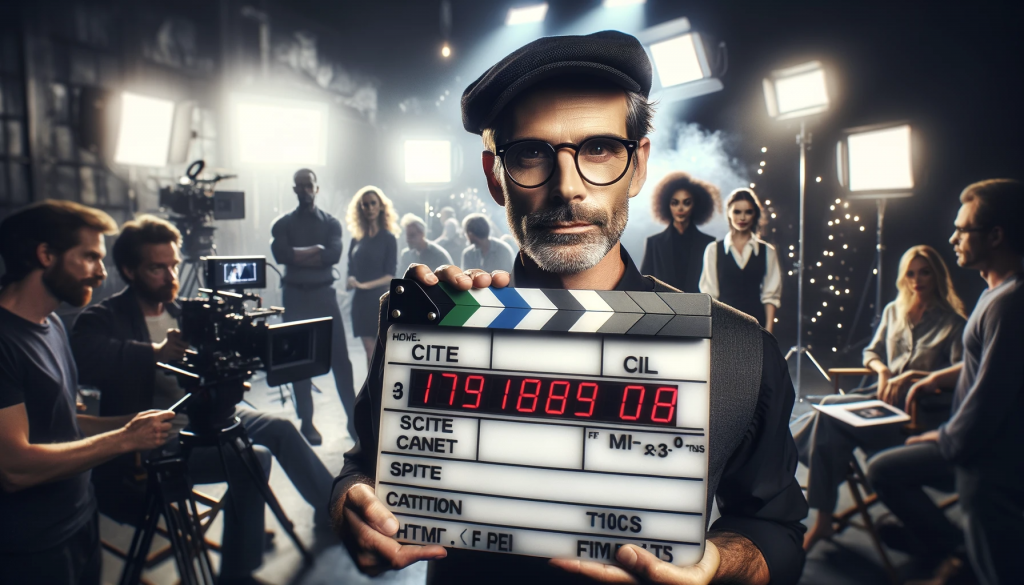
Visual Communication Examples in Fashion
Fashion is an expressive form of visual communication, where design, color, and texture speak volumes. This section uncovers ten unique examples, illustrating how fashion utilizes visual elements to make statements, set trends, and reflect cultural identities. From runway shows to fashion photography, these examples reveal the dynamic nature of fashion as a visual language.
- Runway Show Themes: Sets the mood and inspiration for collections.
Example: “The runway show’s futuristic theme is reflected in its metallic color palette.” - Fashion Photography: Captures the essence of garments and styles.
Example: “The fashion shoot’s lighting and composition emphasize the clothing’s textures.” - Textile Patterns: Communicates style through fabric designs.
Example: “The bold patterns on the fabric make the collection stand out.” - Window Displays in Retail: Attracts customers and showcases trends.
Example: “The store’s window display artfully arranges the latest spring collection.” - Fashion Illustrations: Conceptualizes designs before they are created.
Example: “The illustrations display the designer’s initial vision for the garment.” - Branding in Luxury Fashion: Establishes a designer’s signature style.
Example: “The brand’s iconic logo is subtly incorporated into all its designs.” - Fashion Blogs and Lookbooks: Inspires trends and outfits through visuals.
Example: “The blog’s lookbook creatively pairs different pieces for unique styles.” - Styling in Music Videos: Conveys artists’ persona and message.
Example: “The artist’s styling in the video mirrors the song’s edgy vibe.” - Fashion Show Invitations: Reflects the theme and exclusivity of the event.
Example: “The invitation’s elegant design hints at the show’s luxurious nature.” - Designer Brand Logos: Symbolizes the fashion house’s identity.
Example: “The logo’s sleek design epitomizes the brand’s modern aesthetic.”

Visual Communication Examples in Research
Visual communication plays a crucial role in research, enabling scientists and academics to convey complex data and concepts effectively. Through the use of graphs, charts, and infographics, research findings are made accessible and comprehensible to a broader audience. These visual tools not only simplify the presentation of data but also highlight key insights and trends, fostering a deeper understanding of the research subject.
- 3D Molecular Models: Offer a detailed visual representation of chemical structures.
Example: “The 3D model visually demonstrates the molecule’s complex arrangement of atoms.” - Heat Maps in Data Analysis: Visually represent data density or intensity levels.
Example: “This heat map color-codes the regions based on population density.” - Scientific Poster Presentations: Summarize research findings with graphs and images.
Example: “The poster efficiently communicates our study’s results and methodologies.” - Research Paper Graphs and Charts: Simplify statistical data for easier interpretation.
Example: “The line graph clearly shows the trend in data over time.” - Interactive Digital Timelines: Trace the progress or history of a research field.
Example: “The timeline interactively displays the major milestones in biotechnology research.” - Data Visualization Dashboards: Consolidate multiple data sources into a single interface.
Example: “The dashboard provides an at-a-glance view of the research metrics.” - Infographics in Scientific Journals: Summarize complex theories or experiments.
Example: “The infographic distills the theory into key points and visuals.” - Concept Maps in Research Planning: Organize and structure research ideas visually.
Example: “The concept map helps visualize the relationships between different research variables.” - Flowcharts for Experimental Procedures: Detail the steps in a research experiment.
Example: “The flowchart outlines each stage of the experimental process.” - Photographic Documentation in Field Research: Captures real-time data and observations.
Example: “These photographs document the observed behaviors of wildlife in their natural habitat.”

Visual Communication Examples in School
In the educational environment, visual communication is key to enhancing learning and teaching experiences. From elementary to higher education, visuals like diagrams, educational videos, and interactive whiteboards make complex subjects more accessible and engaging for students. These visual aids cater to different learning styles, fostering an inclusive and effective learning environment.
- Educational Posters in Classrooms: Enhance the learning environment with visual aids.
Example: “The poster visually explains the water cycle in a simple, engaging manner.” - Interactive Whiteboards: Facilitate dynamic and engaging lessons.
Example: “The teacher uses the interactive whiteboard to illustrate math problems visually.” - Classroom Infographics: Break down and simplify educational content.
Example: “The infographic presents the key events of the Civil War in an easy-to-understand format.” - Mind Maps for Brainstorming: Help students visually organize their thoughts.
Example: “Students create mind maps to visually structure their ideas for the group project.” - Educational Videos: Bring concepts to life through visual storytelling.
Example: “The video uses animations to explain the concept of photosynthesis.” - Science Fair Display Boards: Visually present experiments and findings.
Example: “Her display board effectively showcases her science project with graphs and images.” - Timelines for History Lessons: Visually trace historical events and eras.
Example: “The timeline on the classroom wall outlines major events of World War I.” - Illustrated Storybooks for Young Learners: Combine pictures and text for effective storytelling.
Example: “The illustrated book helps children understand the story through engaging visuals.” - Graphs in Math Class: Teach students about data representation and analysis.
Example: “The bar graph helps students compare the sizes of different animal populations.” - School Newsletters with Photos: Keep the school community informed and engaged.
Example: “The newsletter features photos from recent school events, fostering a sense of community.”
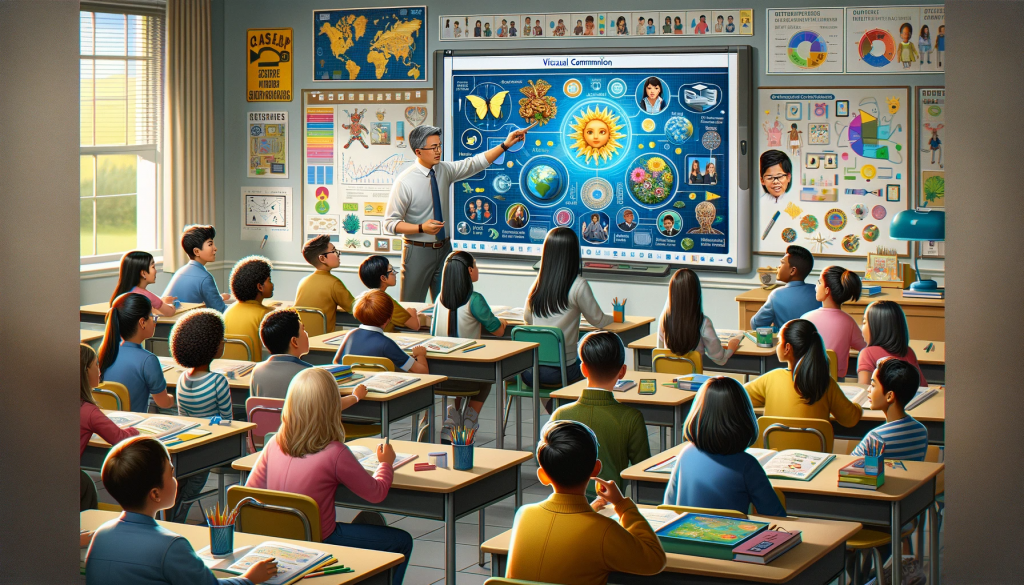
Visual Communication Examples in Marketing
In the realm of marketing, visual communication is indispensable for capturing attention and conveying brand messages. From social media graphics to product packaging, effective visual marketing strategies build brand recognition and connect with consumers. These tools not only enhance the aesthetic appeal but also play a significant role in influencing purchasing decisions and brand loyalty.
- Branded Social Media Graphics: Enhance brand presence on social platforms.
Example: “Our Instagram graphics maintain a consistent color scheme and style, reinforcing brand identity.” - Product Packaging Design: Communicates the brand and appeals to consumers.
Example: “The packaging’s unique design and vibrant colors make the product stand out on shelves.” - Email Marketing Templates: Combine visuals with text for effective communication.
Example: “The email template uses compelling visuals to highlight special offers and new products.” - Billboards and Outdoor Advertising: Capture public attention with large-scale visuals.
Example: “The billboard’s striking image and bold message effectively promote our new campaign.” - Website Design for User Engagement: Aesthetically pleasing and functional design enhances user experience.
Example: “Our website’s design is visually appealing and easy to navigate, encouraging longer visits.” - Marketing Infographics: Present data or information in an engaging format.
Example: “The infographic succinctly communicates the benefits of our product using visuals and key statistics.” - Brand Logo Design: Symbolizes the company’s values and mission.
Example: “Our logo’s simplicity and modern design reflect our brand’s innovative approach.” - Product Demo Videos: Showcase the features and benefits of products.
Example: “The product demo video visually demonstrates how to use our latest kitchen gadget.” - Point of Sale Displays: Attract customers and promote products in stores.
Example: “The point of sale display uses eye-catching graphics to draw attention to the new product line.” - Digital Banner Ads: Visual ads on websites and social media platforms.
Example: “Our banner ad uses vibrant colors and engaging graphics to encourage clicks and drive traffic.”
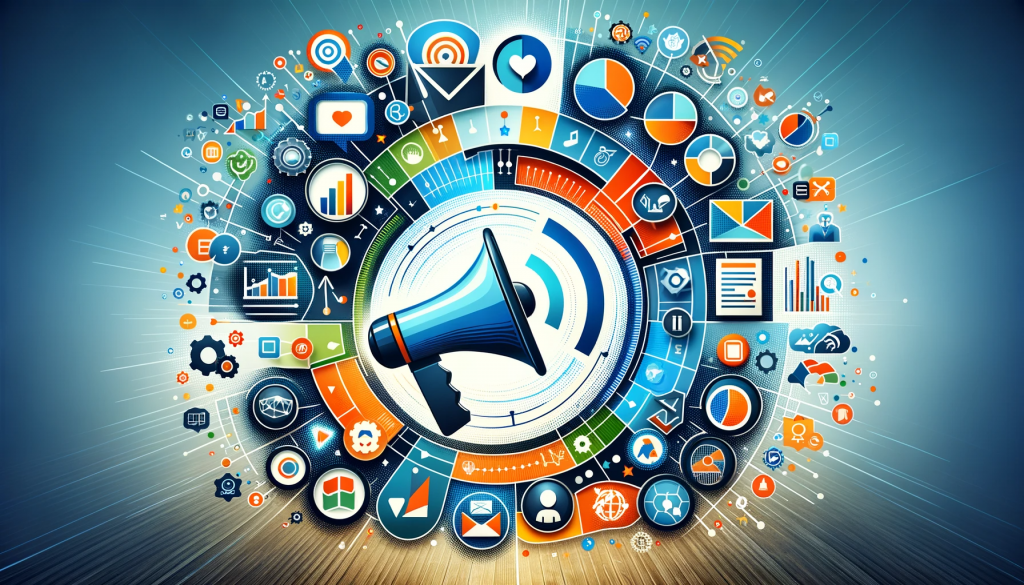
What is an Example of Visual Communication?
Visual communication is an effective and engaging way of presenting information using visual elements. A classic example of visual communication is a road sign. These signs use symbols, shapes, and colors to convey messages quickly and efficiently to drivers. For instance, a red octagonal sign universally indicates ‘Stop’. This visual, requiring no reading, transcends language barriers and conveys an immediate message. Similarly, corporate logos are another example, where a simple visual symbol encapsulates a company’s brand identity. Apple’s bitten apple logo, for example, communicates simplicity and innovation, recognizable worldwide. These examples illustrate how visual communication transcends linguistic boundaries, delivering clear and concise messages effectively.
What are the Types of Visual Communication?
Visual communication encompasses a wide array of types, each serving a unique purpose in conveying information. The primary types include:
- Infographics: These combine images, charts, and minimal text to quickly and clearly present complex information.
- Charts and Graphs: Used in both academic and business settings, they visually represent data, making it easier to understand trends and patterns.
- Maps: From geographical maps to mind maps, they visually represent physical locations or conceptual ideas.
- Signs and Symbols: Utilized in everyday life, like road signs or restroom signs, they convey messages at a glance.
- Photography and Video: Capturing real-life visuals, these mediums are powerful in storytelling and documentation.
- Animations: These bring static images to life, often used in educational contexts to explain complex concepts.
- Branding and Logo Design: Visuals that represent the identity of a brand or organization.
- Web and App Design: The visual layout of digital platforms, crucial for user experience and engagement.
Each type serves different visual communication needs, ranging from educational purposes to corporate branding and user interface design.
What is Visual Representation in Communication?
Visual representation in communication refers to the use of graphical elements to transmit information, ideas, or feelings. It’s a way to present data and concepts through images, symbols, colors, and designs rather than text or speech. This form of communication is particularly powerful as humans process visual information faster and more efficiently than text. Visual representations include elements like charts, diagrams, photographs, videos, and animations.
In the business world, visual representation might take the form of a business dashboard, which visually displays key performance indicators. In education, it could be an illustrated diagram explaining a scientific concept. The effectiveness of visual representation lies in its ability to simplify complex information, making it more accessible and memorable. It’s a crucial tool in various fields, enhancing understanding, retention, and engagement with the content.
Why is Visual Communication Important?
Visual communication holds paramount importance in today’s fast-paced world, where conveying information quickly and effectively is crucial. This form of communication, which utilizes visual elements like images, graphics, and videos, transcends language barriers and delivers messages in a way that is often more efficient and impactful than words alone. Here’s why visual communication is so vital:
- Enhances Understanding: Complex ideas can be simplified through visuals, making them easier to grasp. For instance, a well-crafted infographic can make intricate data accessible to a broader audience.
- Increases Engagement: Visuals are more engaging than text-heavy content. They capture attention and maintain interest, essential in marketing and education.
- Improves Retention: People tend to remember visual information better than text. Using visuals aids in long-term memory retention, an invaluable aspect in learning and branding.
- Facilitates Quick Communication: In our fast-paced digital world, visuals allow for rapid conveyance of messages, essential in fields like social media, news, and emergency services.
- Emotional Impact: Visuals can evoke emotions more directly than text, making them powerful tools in storytelling and advertising.
- Universal Appeal: Visual communication breaks down linguistic and cultural barriers, making messages universally understandable.
In summary, visual communication is a cornerstone of effective information dissemination, resonating with audiences in a way that words often cannot.
Top Goals of Visual Communication
The primary objectives of visual communication are as varied as they are vital. Understanding these goals helps in creating more effective visual content, whether for educational, business, or personal purposes. The top goals include:
- Clarity in Message Delivery: The foremost goal is to convey messages clearly and unambiguously. Visuals should simplify complex information, not complicate it.
- Audience Engagement: Keeping the audience engaged, whether it’s a classroom of students or potential customers, is a key objective. Engaging visuals lead to better comprehension and response.
- Brand Recognition and Consistency: In marketing, visual communication aims to establish and maintain brand identity through consistent use of colors, logos, and styles.
- Effective Data Presentation: Turning data into visual formats like charts and graphs for easy analysis and interpretation is a crucial goal, particularly in research and business.
- Instruction and Education: Using visual aids to enhance learning and understanding, especially in educational settings or instructional materials.
- Emotional Connection: Creating an emotional bond with the audience, a tactic often employed in advertising and storytelling.
Achieving these goals ensures that visual communication serves its purpose effectively, whether it’s in an academic, professional, or personal context.
What is the Purpose of Visual Communication?
The purpose of visual communication extends beyond merely presenting information; it’s about enhancing the way we connect and interact with that information. The key purposes include:
- Simplifying Information: Complex ideas, data, and concepts are broken down into simpler, more digestible visual formats.
- Facilitating Faster Understanding: Visuals enable quicker comprehension compared to text, saving time and increasing efficiency in communication.
- Enhancing Accessibility: Making information accessible to a wider audience, including those with literacy challenges or language barriers.
- Supporting Decision Making: In business and research, visual aids help in summarizing data and trends, aiding in informed decision-making.
- Improving Learning Experiences: Visuals cater to various learning styles, particularly visual learners, making education more inclusive and effective.
- Promoting Creativity: In art and design, visual communication is a medium of creative expression, pushing the boundaries of how we perceive and interpret information.
Importance of Visual Communication
Visual Communication plays a pivotal role in today’s fast-paced and increasingly digital world. It involves conveying ideas and information in forms that can be seen, which is crucial in a society where visual content is king. From simple infographics to complex data visualizations, visual communication bridges the gap between complex information and audience comprehension. This form of communication is not only faster and easier to digest but also caters to the growing preference for visual media over textual content in both personal and professional settings. Utilizing visual elements in Communication Strategies enhances understanding and retention, leading to more effective and impactful messaging.
What are the Elements of Visual Communication?
Visual Communication is composed of several key elements that work together to create effective and engaging visual messages. These elements include color, shape, space, form, line, texture, and typography. Each element serves a specific purpose in creating a cohesive visual language. For instance, color can be used to evoke emotions and highlight important data, while typography ensures clarity and readability. Understanding these elements is crucial for effective Visual Representation in Communication. By mastering the use of these elements, communicators can create visuals that not only capture attention but also convey their message clearly and effectively.
How a Visual Communication Platform Can Help?
A Visual Communication Platform is an invaluable tool in today’s digital landscape, especially for businesses and educational institutions. These platforms offer a range of features to create, manage, and share visual content effectively. They facilitate seamless Collaboration and Internal Communication through features like templates, cloud storage, and real-time editing. For businesses, such platforms enhance Brand Communication, enabling them to convey their message in a visually appealing manner. In education, these platforms support Visual Communication in Education, making learning more engaging and accessible. By leveraging these platforms, users can streamline their communication process, ensuring their visual content is not only visually appealing but also strategically aligned with their objectives.
Why Does Visual Communication Matter?
Visual communication, an essential aspect of nonverbal communication, holds paramount importance in today’s fast-paced and image-driven world. It transcends the barriers of traditional oral communication, allowing for more engaging, efficient, and effective conveyance of information. By incorporating elements like images, videos, and graphics, visual communication caters to the rapidly decreasing attention spans, enhancing understanding and retention. This form of communication not only bridges linguistic gaps but also helps in presenting complex data in a more digestible format, making it a crucial tool in professional communication and internal communication.
How to Use Visual Communication in the Workplace?
Incorporating visual communication in the workplace can significantly enhance team communication and employee communication. Utilize visual aids like flowcharts, infographics, and presentations to clarify and support verbal instructions, ensuring a better understanding of complex processes or strategies. Visual communication also plays a vital role in internal communication, helping in keeping employees aligned with the company’s goals and values. To effectively implement visual communication, it’s essential to understand the communication styles of your team and choose the appropriate visual tools that cater to those styles. Regular training sessions on effective communication and communication technology can further empower employees to use visual aids efficiently.
How Does Visual Storytelling Help in Marketing and Advertising?
Visual storytelling in marketing and advertising leverages the power of images, videos, and graphics to craft compelling narratives that resonate with the audience. It’s an impactful strategy in integrated marketing communications, where the aim is to connect with the customers emotionally and leave a lasting impression. In advertising, visual storytelling can transform mundane information into captivating stories, making the brand more memorable. Utilizing visual narratives in digital communication, especially on social media, can significantly boost engagement and conversion rates. This approach aligns with the communication strategy of modern marketing, where storytelling is not just about selling a product but building a brand story that customers can relate to and remember.
How Can You Use Visual Communication in Education?
Visual communication plays a pivotal role in enhancing educational experiences by simplifying complex concepts and making learning more engaging. In today’s digital age, visual aids such as infographics, videos, and interactive presentations are indispensable tools in the classroom. They help in breaking down intricate topics into easily digestible visuals, aiding students in better comprehension and retention of information.
For instance, in subjects like science or mathematics, using diagrams and visual simulations can clarify concepts that are difficult to grasp through oral communication alone. Similarly, in history or literature, visual timelines and character maps can provide students with a clearer understanding of events and narratives.
Moreover, visual communication encourages active learning. It invites students to analyze and interpret visual information, honing their critical thinking skills. This approach aligns with modern educational communication methods that focus on student engagement and interactive learning environments.
By integrating visual elements into lesson plans, educators can cater to different learning styles, making education more inclusive and effective. It also prepares students for a world where visual literacy is increasingly important, equipping them with skills essential for both academic and future career success.
How Can You Boost Your Brand with Visual Content?
In the realm of business communication, visual content is a powerful tool to boost brand identity and engage with target audiences. Brands can leverage visuals to tell their stories, convey their values, and connect with customers on a deeper level.
High-quality images, videos, infographics, and graphics can significantly enhance the appeal of your brand. For instance, an eye-catching logo or a unique color scheme can make your brand instantly recognizable. Visual storytelling, through compelling videos or image-driven social media campaigns, can evoke emotions and build a stronger emotional connection with your audience.
Moreover, in the context of digital communication, visual content can increase online visibility and drive engagement. Platforms like Instagram, Pinterest, and YouTube are ideal for showcasing visual content and reaching a wider audience. High-quality visuals are more likely to be shared, increasing your brand’s reach and potentially leading to higher conversion rates.
Incorporating visual elements into your marketing strategy is not just about aesthetics; it’s about creating a memorable brand experience. By consistently using visually appealing content, you can strengthen your brand identity, differentiate from competitors, and foster a loyal customer base.
What Are the Tools of Visual Communication?
Visual communication encompasses a wide range of tools and technologies designed to convey information visually. These tools vary from traditional mediums like drawings and paintings to modern digital technologies.
Key tools include:
- Graphic Design Software: Programs like Adobe Photoshop, Illustrator, and Canva are essential for creating professional-grade visuals. They offer a range of features to design everything from simple graphics to complex illustrations.
- Data Visualization Tools: Tools such as Tableau or Microsoft Excel are crucial for transforming complex data sets into comprehensible visual formats like charts and graphs, facilitating better data analysis.
- Video Editing Software: With the rise of digital media, software like Adobe Premiere Pro and Final Cut Pro are vital for creating high-quality video content, an integral part of visual storytelling.
- Presentation Software: PowerPoint, Keynote, and Google Slides are fundamental in creating engaging presentations, widely used in both educational and corporate settings.
- Augmented and Virtual Reality: These cutting-edge technologies offer immersive experiences, making them increasingly popular in fields like education, marketing, and entertainment.
- Web Design Tools: Understanding web design is crucial in the digital era. Tools like WordPress and Adobe Dreamweaver help in creating visually appealing and user-friendly websites.
By leveraging these tools, individuals and organizations can effectively communicate complex information, tell compelling stories, and create engaging experiences through visual means.
How to Improve Visual Communication?
Improving visual communication is vital in today’s information-rich world, where visuals often speak louder than words. Here are key strategies to enhance visual communication:
- Focus on Clarity and Simplicity: The primary goal of visual communication is to convey a message effectively. Use clear, straightforward visuals that are easy to understand. Avoid clutter and overly complex designs that might confuse the audience.
- Understand Your Audience: Tailor your visuals to the preferences and understanding level of your target audience. Different groups may interpret visuals differently, so it’s important to consider cultural, educational, and social backgrounds.
- Use Consistent Visual Elements: Consistency in colors, fonts, and styles helps in creating a coherent message. This consistency aids in brand recognition and makes your communication more professional and credible.
- Incorporate Storytelling: Humans are naturally drawn to stories. Use visual storytelling to engage your audience and make your message more memorable. This could involve using sequential images, infographics, or video narratives.
- Leverage Color Psychology: Colors evoke emotions and can significantly impact how your message is received. Understanding color psychology can help in choosing colors that align with the message you want to convey.
- Optimize for Accessibility: Ensure your visuals are accessible to all, including those with disabilities. This includes considering color contrasts, using alt text for images, and ensuring that your visuals are legible on various devices and screen sizes.
- Utilize Technology and Tools: Various tools and software can enhance visual communication. From graphic design software like Adobe Photoshop to data visualization tools like Tableau, leveraging the right technology can make a significant difference.
- Feedback and Iteration: Continuously seek feedback on your visual communications and be willing to make adjustments. Iteration is a key part of improving and refining your visual messaging.
- Educate and Train: Invest in training for yourself or your team in visual design principles. Understanding the basics of design, color theory, and typography can immensely improve the quality of your visual communication.
- Stay Updated with Trends: Visual communication trends evolve rapidly. Staying updated with the latest trends and adapting them to your communication strategy can keep your visuals fresh and relevant.
By implementing these strategies, you can significantly enhance the effectiveness of your visual communication, ensuring that your message is not only seen but also understood and remembered.
Tips for Effective Visual Communications
In today’s digital era, visual communication is more vital than ever. It’s not just about conveying information; it’s about doing so in a way that is engaging, clear, and memorable. Effective visual communication can make the difference between a message that is overlooked and one that resonates with its audience. Here are some essential tips to enhance your visual communication skills, ensuring your message is both seen and understood.
1. Understand Your Audience
Before creating any visual content, it’s crucial to understand who your audience is. This includes their preferences, cultural background, and level of understanding of the subject. Tailoring your visuals to your audience ensures that your message is relevant and easily digestible.
2. Keep It Simple and Clear
Clarity is key in effective communication. Avoid cluttering your visuals with too much information. Use simple designs and clear imagery to convey your message. A minimalistic approach often makes a stronger impact.
3. Use Consistent Branding
Consistent branding, including the use of specific color schemes, fonts, and logos, helps in building recognition and trust. This brand communication approach ensures that your audience immediately identifies and connects with your message.
4. Balance Text and Images
While images are powerful, the balance between text and visuals is crucial. Ensure that your text complements the visuals and vice versa. This balance enhances understanding and retention of the information.
5. Emphasize Key Points with Visual Hierarchy
Visual hierarchy involves arranging elements in a way that naturally draws the viewer’s attention to the most important information first. Use size, color, and positioning to guide the viewer’s eye through your content.
6. Choose the Right Color Palette
Colors evoke emotions and can significantly impact how your message is perceived. Choose a color palette that aligns with the emotion you want to convey, whether it’s excitement, trust, or calmness.
7. Utilize Data Visualization
In fields like data science and business, translating complex data into easy-to-understand visuals is crucial. Charts, graphs, and infographics can make complex data accessible and engaging.
8. Get Feedback and Iterate
Feedback is a vital part of the communication process. Get opinions from different types of people to see how your visual communication is perceived and be ready to make adjustments.
9. Stay Updated with Trends
Visual communication is an evolving field. Staying updated with the latest trends in design and technology can give you an edge and make your content more appealing and relevant.
10. Invest in Quality Visuals
Quality visuals can make a significant difference. High-resolution images, professional designs, and well-produced videos can increase the effectiveness of your communication efforts.
visual communication is a powerful tool when used effectively. By following these tips, you can ensure that your visual messages are not just seen but are also impactful and memorable. Whether it’s in marketing, education, or internal communication, these strategies can help you convey your message effectively and efficiently.



